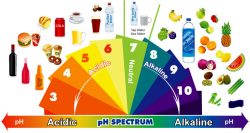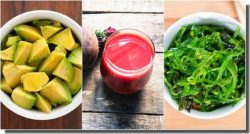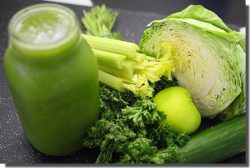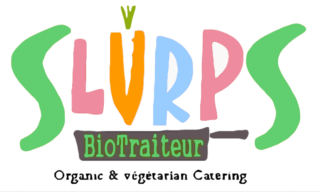

Do you wake up tired, even after a good night’s sleep?
Do you lack energy, are you aching all over, are you frequently sore?
Do you have dry skin or dull hair? Poor digestion and weight loss?
If you have a combination of symptoms, chances are your body is too acidic.
Try this method of rebalancing your diet and you’ll see, it works!
* Honestly Healthy. Eat with your body in mind, the alkaline way” (ed. Jacqui Small).
ARE YOU TOO ACIDIC?
You can test your urinary pH yourself using indicator papers (available from chemists), “three times a day to get a good estimate, because we’re more acidic in the morning”, explains nutrition coach Virginie Parée, who works at the Sophia Country Club in Biot. But the most reliable way is to ask
blood, urine and saliva tests.
PH 7, THE KEY TO BALANCE
To be healthy, our bodies need to function with body fluids (blood, saliva, lymph, cell serum, etc.) that are neither too acidic nor too alkaline, with an ideal pH between 7 and 7.4. And while our bodies naturally produce acids during digestion (gastric acid) or physical exertion (lactic acid), the kidneys and lungs know how to eliminate them, while mineral salts (potassium, calcium and magnesium) naturally alkalize the body. All this works perfectly as long as the body is not saturated with acids.
WHY DOES IT GO WRONG?
Firstly, because we often eat poorly. In general, the culprit is industrial and refined food, as well as red meat, cold meats, cheeses, sweets, alcohol, coffee, condiments and vinegar (except apple vinegar), all of which require complicated, acidifying digestion. Secondly, because our bodies are subjected to excessive stress, which is highly oxidative, but also to poor breathing, lack of sleep and a polluted atmosphere. All these factors are sources of acids that make vital fluids thick and slow, less able to distribute nutrients (vitamins, minerals, trace elements) to the organs. The body, forced to draw on its reserves, becomes exhausted.

EATING BETTER FOR ALKALIZATION
The first place to start is on the plate. And the good news is that you’re not depriving yourself of anything, because in every food category (meat, fish, cereals, etc.), you’ll find “friends”. What’s more, some of these “acids” are nonetheless of nutritional interest, as in the case of oily fish such as salmon, tuna and herring, whose omega-3s are excellent for your health.
The idea is not to eliminate these sources of acidity altogether, but to limit their consumption and counter their effects by simply accompanying them with a nice portion of super-alkalinizing raw or cooked al dente vegetables. Moral: just like in New York restaurants, eat your burger with fresh spinach, not fries! At every meal, aim for this ratio: 70% alkaline or neutral foods and 30% acidic foods. In practice, we opt as much as possible for simple products, fresh or frozen, natural or organic, whole or semi-complete (pasta, rice, cereals, sugar, etc.). And we reduce animal proteins as much as possible. On your shopping list, include the most rebalancing foods to lower your acidity levels.
Fruits and vegetables: potatoes and sweet potatoes, all kinds of greens, avocados, seaweed (tartar on wholemeal bread is perfect), green smoothies and fresh or bottled vegetable juices (in organic stores: Biotta’s Breuss juice, made from carrots, beet, potatoes, celery and radish), sprouted seeds, apples and bananas (eaten away from meals), “live” almonds (a handful each day, soak overnight in spring water, rinse and remove the skin. They will keep for several days in the fridge in a bowl of water with a lid).

Fruits and vegetables, eaten raw or gently cooked, boost enzymes. Acting like “little hands”, they cut up food, facilitate acid-base regulation and redistribute the right nutrients to the right places.
we’re going easy on the salt. The chlorine it contains is acidifying. On the other hand, it promotes hypertension, muscle wasting and calcium leakage through urine. Instead, salt with a little tamari (fermented soy sauce, full of vitamins and minerals) or gomasio (a mixture of sea salt and sesame seeds) and season with herbs and spices (ginger, onion, etc.).
Lemon juice is also very beneficial: although acidic to the taste, it becomes basifying during digestion. If you’re at a loss, take a look at the lists of acid-base foods you can download from the Net, And we’re investing in two amazing books, full of advice and recipes: “L’Equilibre acido-basique pour retrouver le bien-être”, by Carine Soblet (ed. De Borée), and “Le Grand Livre de l’équilibre acido-basique”, by Anne Dufour and Catherine Dupin (Leduc.s Editions).
THREE LIFESAVING GESTURES
We take our inspiration from Dr Peter Jentschura’s depurative method,
1. Drink herb juice in the morning on an empty stomach for a shot of chlorophyll.
2. We take two baths a week with coarse salt, 30 minutes in water at 37°C.
3. We sip Uberti cider vinegar (available in organic stores and on biocenter.fr), made from 34 regenerating plants: 2 teaspoons in a glass of hot water, morning and evening.
BREATHE, MOVE, SWEAT: OTHER ANTI-ACIDITY REFLEXES
According to Stéphane Jaulin, of L’Appartement 217 in Paris, the worst enemy of our EAB (acid-base balance) is stress (which drains our magnesium reserves) and mental hyperactivity, boosted by a constant stream of bad news, an ever-faster pace of work and electromagnetic fields from computers and laptops. The parade? Breathing. It removes 80% of waste. Her advice: wake up cool, give yourself 30 minutes of peace to think about yourself and your day, without television, computer or laptop. Morning and evening, take 15 deep breaths in and out. And don’t forget to move. Walking, swimming, dancing or stretching promote healthy breathing (but not in the middle of cars!), as the lungs regulate and eliminate acids from the body. But be careful not to overdo sport, as lactic acid will then flood the muscles: a short session twice a week is good enough, then drink enough fluids (especially thyme, mint and lemon infusions) to eliminate the acids via the kidneys. And we schedule a hammam from time to time, with a kessa glove scrub, since perspiration plays an equally important role in this acid-base regulation system.
Six “basic” recipes
Green smoothie

Blend 1 banana + 1 handful spinach + 1 peeled pear + 1 glass coconut water. Serve with 10 almonds (soaked overnight, skin removed).
Romaine-kale salad
Mix 1 coarsely chopped romaine lettuce + 1/2 kale julienned and “massaged” for a few minutes in the salad bowl with 1 pinch of salt. Season with this blender dressing: 1/2 cup macadamia nuts + 1/2 cup pine nuts + 3 dates + 5 basil leaves + 1/4 cup coconut water + juice of 4 lemons + 1 garlic clove + salt and pepper. Complete with tofu or tempeh
.
Potato and sweet potato duo with seaweed caviar
Steam 1 potato + 1 sweet potato, cut into chunks. Serve with this fresh seaweed caviar: in a blender, blend 100 g sea lettuce + 100 g dulse (from Naturalia) + 100 g wakame (in organic stores, sold salted, rinse well) + the juice of 1 lemon + 1 garlic clove + 1 handful capers + 3 gherkins + 1 dozen black olives + 3 tablespoons olive oil, adding as you go. At the end, add 2 chopped shallots.
Chocolate and avocado mousse
Blend 3 ripe avocados + 3 tablespoons agave syrup + 90 g organic cocoa powder + 1 pinch cinnamon.
Curry and lemongrass soup
Cook 1/2 sweet potato in 1 liter of organic vegetable stock for 10 minutes. Then add 1 yellow bell pepper cut into strips + 1 large mushroom, thinly sliced + 1 carrot, roughly diced + 100 g snow peas + 1/2 cup coconut milk + 1 lemongrass stick, quartered + 2 pinches curry powder + 1 pinch sea salt + 1 teaspoon soy sauce. Cook for a further 10 minutes, remove the lemongrass, blend and enjoy piping hot.
.
Quinoa salad with green vegetables
Steam 100 g quinoa + 1 bunch broccoli + 1 small zucchini cut into sticks. Mix and season with this pesto in a blender: 1 bunch basil + 1 handful pine nuts + 1/2 clove garlic + 2 tablespoons olive oil + salt and pepper.
